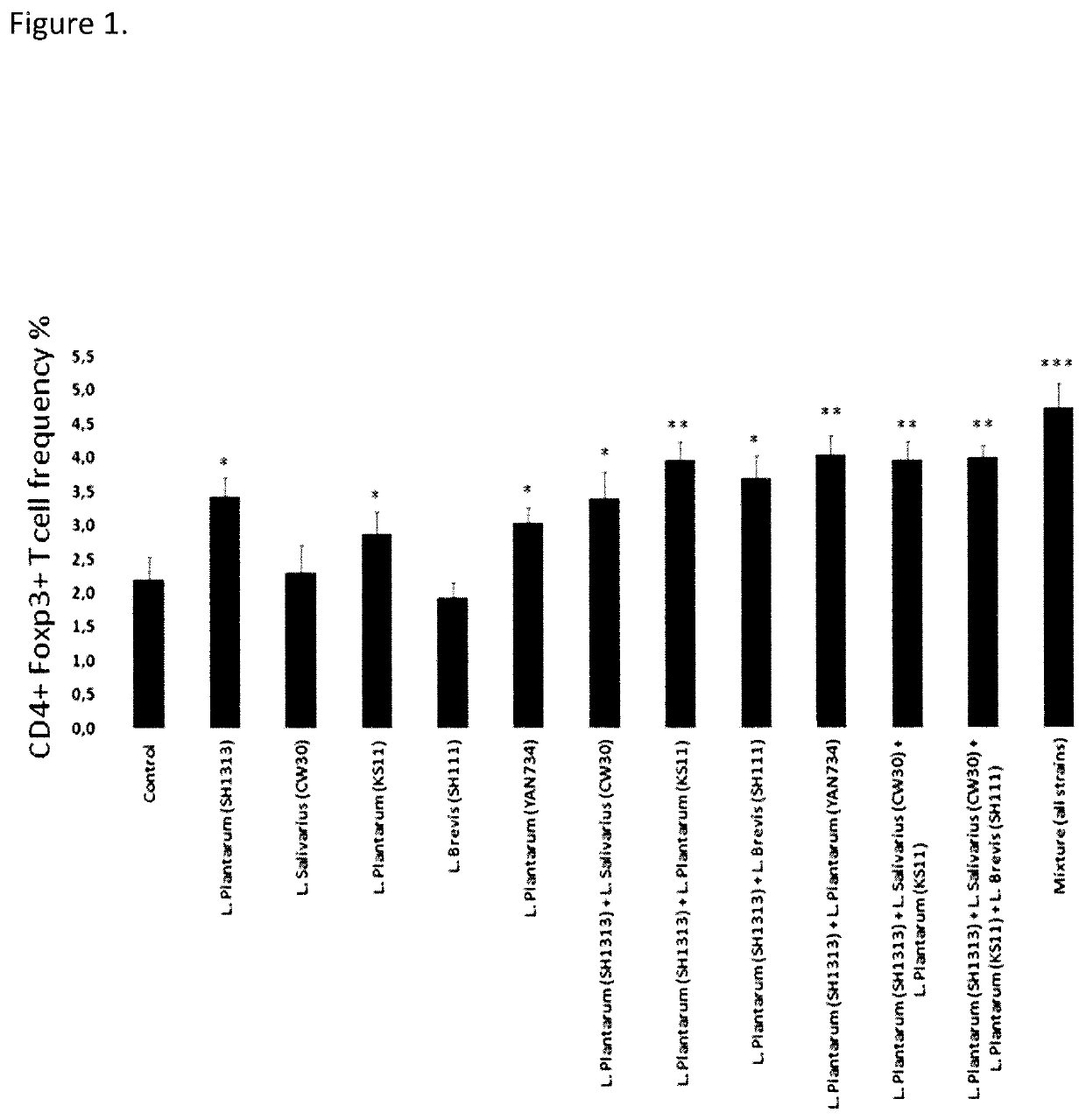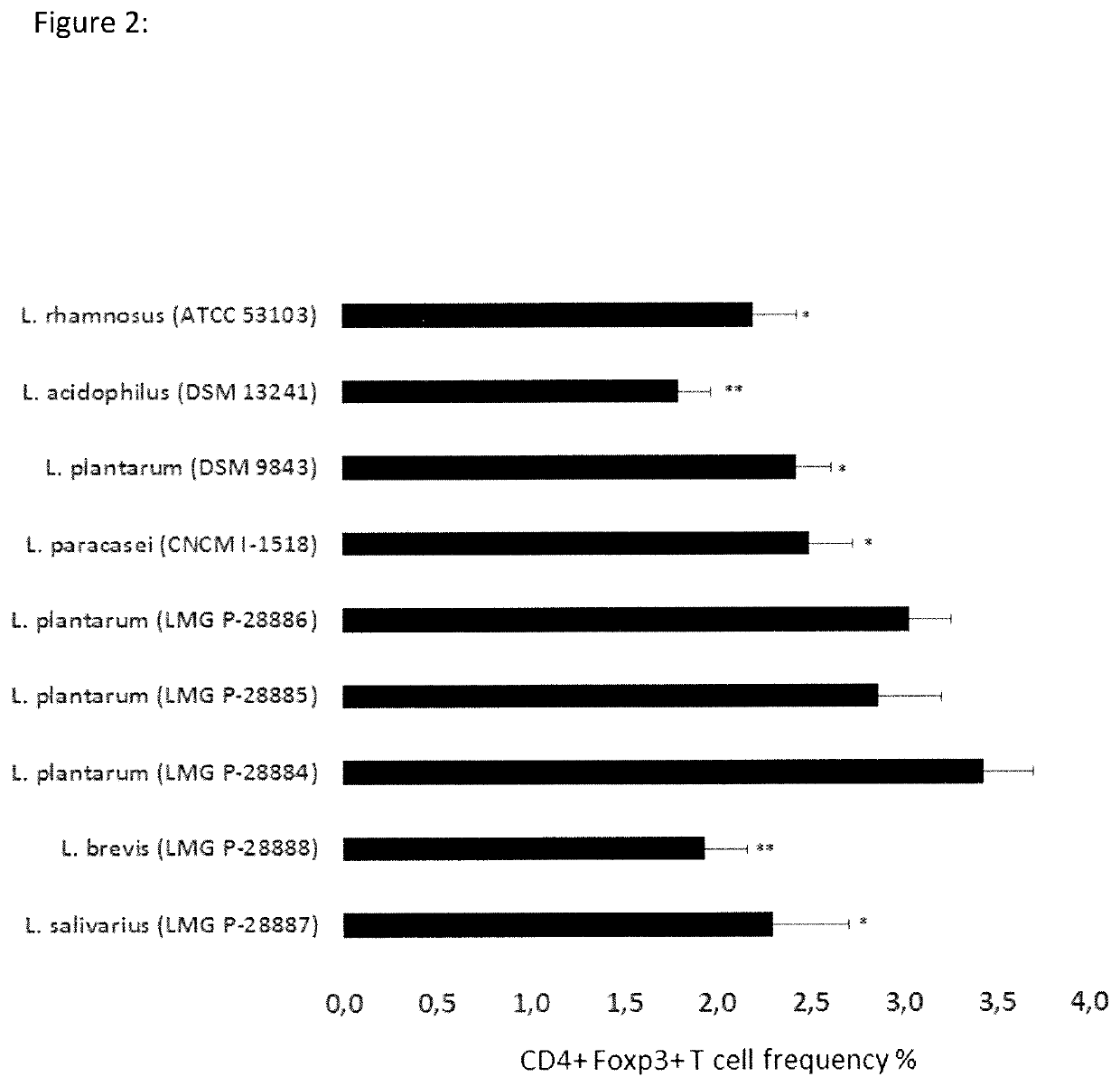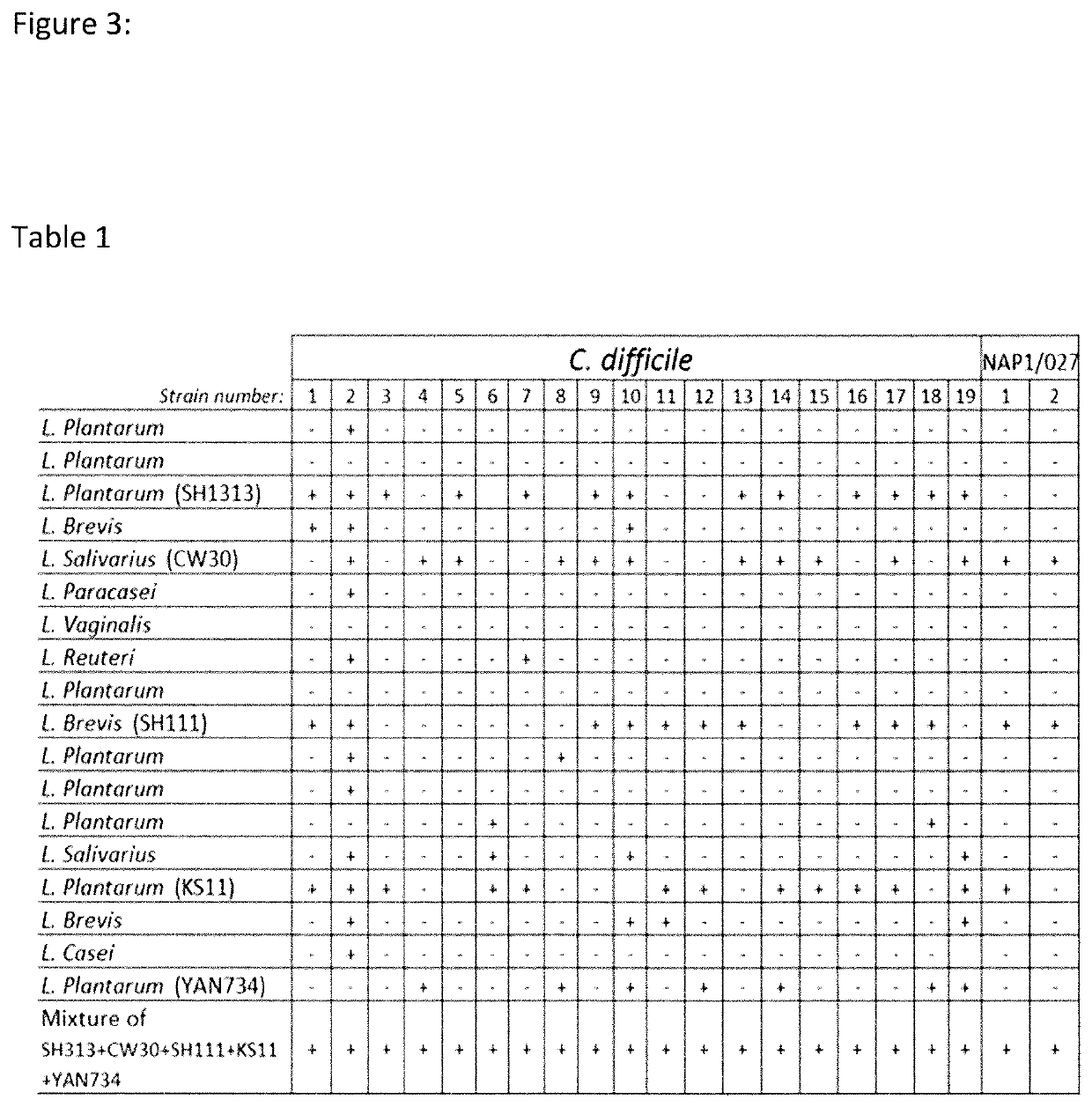Composition and method for treatment and prophylaxis of intestinal infection and inflammation
a technology for applied in the field of composition and method for treating and prophylaxis of intestinal infection and inflammation, can solve the problems of increasing the risk of pathogen infection, pathobiont overgrowth, and inappropriate local and systemic immune responses, so as to improve the risk of infection and increase the risk of infection
- Summary
- Abstract
- Description
- Claims
- Application Information
AI Technical Summary
Benefits of technology
Problems solved by technology
Method used
Image
Examples
specific embodiments
[0115]1. Composition for use in the treatment and / or prevention of a gastrointestinal condition, comprising L. salivarius CW30 (LMG P-28887).
[0116]2. Composition for use in the treatment and / or prevention of a gastrointestinal condition, comprising L. salivarius CW30 (LMG P-28887) and L. plantarum Y1An734 (LMG P-28886).
[0117]3. Composition for use in the treatment and / or prevention of a gastrointestinal condition, comprising L. salivarius CW30 (LMG P-28887), and L. plantarum SH1313 (LMG P-28884).
[0118]4. Composition for use in the treatment and / or prevention of a gastrointestinal condition, comprising L. salivarius CW30 (LMG P-28887) and L. plantarum KS11 (LMG P-28885).
[0119]5. Composition for use in the treatment and / or prevention of a gastrointestinal condition, comprising L. salivarius CW30 (LMG P-28887) and L. brevis SH111 (LMG P-28888).
[0120]6. Composition for use in the treatment and / or prevention of a gastrointestinal condition, comprising L. salivarius CW30 (LMG P-28887), L....
PUM
| Property | Measurement | Unit |
|---|---|---|
| time | aaaaa | aaaaa |
| time | aaaaa | aaaaa |
| temperature | aaaaa | aaaaa |
Abstract
Description
Claims
Application Information
 Login to View More
Login to View More - R&D
- Intellectual Property
- Life Sciences
- Materials
- Tech Scout
- Unparalleled Data Quality
- Higher Quality Content
- 60% Fewer Hallucinations
Browse by: Latest US Patents, China's latest patents, Technical Efficacy Thesaurus, Application Domain, Technology Topic, Popular Technical Reports.
© 2025 PatSnap. All rights reserved.Legal|Privacy policy|Modern Slavery Act Transparency Statement|Sitemap|About US| Contact US: help@patsnap.com



